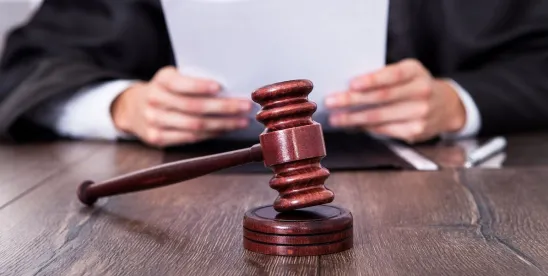You are setting up for a trade show in Munich, when local authorities suddenly arrive, shut down your booth, and confiscate your exhibits. They show you what is purported to be a court order issuing a preliminary injunction against displaying products that infringe patents owned by your main competitor. You’ve had no advance notice of any legal proceeding. Is this action legitimate and was there anything you could have done to protect against it? The answer to both queries is “yes.”
Most European jurisdictions offer patentees the option to pursue injunctive relief, including emergency preliminary injunctions. To obtain such relief, the patentee must prove in court that infringement is clearly established, the asserted patent is valid, and that relief is urgently needed. While actions requesting preliminary injunctions typically proceed inter partes, with both patentee and alleged infringer appearing before the court, some may proceed ex parte with only the patentee, thereby denying the alleged infringer the opportunity to defend. Furthermore, actions for injunctive relief that proceed ex parte often do not require notice to be given to the alleged infringer, making possible the above scenario where the alleged infringer was blindsided with a court order.
When the timing of the injunction coincides with a highly visible activity, such as a product launch or a trade show, it can damage customer relationships and cause serious public relations issues. So how can you avoid such a fate? Increasingly, the answer is by proactively filing a so-called “Protective Letter” prior to your competitor’s infringement suit. Protective Letters first gained prominence in Germany, wherein they are known as “Schutzfrist.” A presumed defendant can file a Protective Letter setting forth defenses to infringement claims it expects to be asserted by a particular patentee. Should the patentee actually file an infringement action, the court will consider the defenses laid out in the Protective Letter before ruling on the request for injunctive relief. If the Protective Letter is persuasive, it will prevent the preliminary injunction from being issued.
In practice, careful consideration should be made to determine where and when to file a Protective Letter. To address possible contingencies regarding the forum the patentee may choose, the same Protective Letter may be filed with many courts. For example, if the alleged infringer is attending a trade show, it may choose to file copies of the Protective Letter in each court located within a certain radius of the show. Additionally, the court may order an oral hearing on the request for injunctive relief, and therefore the Protective Letter should be filed well in advance of the trade show or other event to accommodate the hearing, typically two to six weeks.
The use of Protective Letters has been gaining acceptance throughout the European region. While the practice is most well-established in Germany, other countries such as Switzerland, Belgium, and the Netherlands also accept Protective Letter submissions. More significantly, the Unified Patent Court allows the use of Protective Letters, making the procedure available to defend against infringement actions asserted under any patent issued by the European Patent Office.
As the use of Protective Letters gains more universal acceptance, we encourage you to consider their use prior to trade shows, product launches, or any other event that may trigger an infringement suit by a competitor.



 />i
/>i

